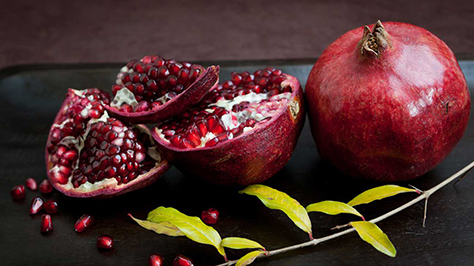
Dr. RAJ KUMAR SHARMA shares his Ayurveda mantra to good health:
It has been observed that man has an in built mechanism of taking particular food as per body needs or requirements in different seasons.We have a natural tendency to take high calorie diets like peanuts, cashews, pistachios, ghee, butter, cheese, sweets, black lentils (urad daal or mah ki daal) in the winter when body loses heat. Similarly, in summer we are inclined to consume low calorie, cold potency diet like light vegetables lauki, pumpkin, melons, boiled rice, moong & masur ki daal, khichri, dalia, lassi (skimmed curd diluted with water), etc. We rarely have an urge to have cashews, peanuts, mah ki daal (urad), high calorie sweets like Irani Ladoos (prepared from coconut and other dry fruits) in summer (June-July) months.In Ayurvedic system of medicine, which is India’s native wisdom in health and medicine, great importance has been given to taking food compatible with a particular season, so as to remain healthy and disease-free.For this purpose, a year is divided into two semesters called Aadan kaal (Utraayan) and Visarg kaal (Dakshinaayan). In Aadan kaal or Utraayayan apparent position of sun is in north (Uttar) and in Visarg kaal or Dakshinaayan apparent position of sun is in South (Dakshin). In a calendar year Aadan kaal (Utraayan) is from mid-Jan to mid-May and Visarg kaal (Dakshinayan) is from mid-May to mid-January. Further, a year is divided into six seasons viz Sishir (mid-Jan to mid-March also termed as Maag and Phagun months), Vasant (mid-March to mid-May also called Chaitra & Baisakh months), Grisham (from mid-May to mid-July also called Jeshtha & Aashar), Varsha (mid-July to mid-September also referred as Shravan and Bhadrapad), Sharat (mid-September to mid-November also termed as Ashwin & Kartik months), and Hemant (mid-November to mid-January termed as Maarg Shirash and Paush months).In order to remain healthy and disease free, compatible with different seasons, specific food and lifestyle has been advised in Ayurveda called Ritu Charya and the readers are advised to follow the same.
GRISHAM RITU CHARYA (mid-May to mid-July)
It is summer season and effect of sun is at its climax which dries up body energy also.Staple Food recommended for this season is light grains like, rice, barley, oats and multigrains, which are cold in potency. Pulses advised are moong, masoor which are easy to digest. Vegetables should include lauki, turai, pumpkins, tinda, cabbage, lemons, coriander leaves, mint leaves, and cucumber. Fruits best for this season are watermelon, muskmelon, sharda, pomegranates which have a cooling effect; bananas, apples and papaya can also be taken. Mangoes should be taken in small quantities and grapes should be avoided. Ber and oranges can also be taken. Dry fruit recommended in this season is almond soaked in water for a few hours. Melon seeds and cucumber seeds are also recommended in this season. Spices recommended for this season are coriander, cumin, fennel, cardamom, turmeric, mustard seeds. Cinnamon, Cloves and piper longum should be avoided. Heavy to digest and fried foods should be a strict no-no in this season lifestyle – One should avoid moving in sunlight or should use umbrella. Fans and air conditioned atmosphere is good for this season. Sleeping in open air is recommended but fans should be used to avoid mosquitoes. Moonlit nights cool the body in this season. Sandalwood paste applied on body few minutes before bath is very cooling. Even after bath sandalwood paste should be applied on forehead. Sandal and jasmine perfumes are also recommended in this season. Light and cotton clothing are recommended for this season. Light exercises and early morning walk on dew-laden grass are also beneficial for this season. Heavy and exhausting exercises should be avoided.
Dr Raj Kumar Sharma is the Principal of Dayanand Ayurvedic College, Jalandhar and the Editor of popular health magazine DAV Ayurveda


